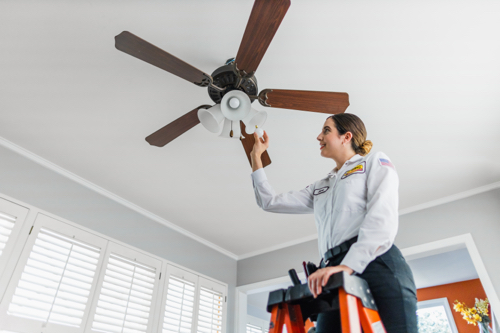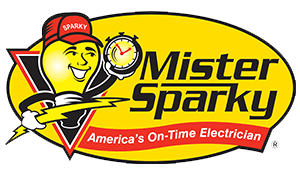Energy-Efficient Ceiling Fans: Are They Worth the Hype?
The modern homeowner is more resource-conscious than ever before. Rising energy bills, growing environmental concerns, and a push toward sustainable living have made energy efficiency a priority for many. Among the essential appliances in a home, ceiling fans often fly under the radar when it comes to energy-saving strategies. But here’s the good news — the right ceiling fan can be an energy-efficient powerhouse, helping you stay cool while saving money.
This blog dives into energy-efficient ceiling fan options, exploring features, technologies, and installation tips that can make a world of difference in your home.
Why Ceiling Fan Efficiency Matters
Ceiling fans are among the most practical ways to regulate your home’s temperature, especially when paired with air conditioning. But not all fans are created equal. Older models can consume unnecessary electricity, adding to your energy bill with little benefit to your comfort. Energy-efficient ceiling fans, however, are designed to circulate air more effectively, requiring far less energy to operate.
Energy-efficient fans can:
- Reduce energy consumption.
- Lower cooling costs in the summer.
- Enhance comfort during winter by redistributing warm air trapped near the ceiling.
Choosing the right fan isn’t just about style it’s about combining performance with thoughtful energy savings.
Features to Look for in an Energy-Efficient Ceiling Fan
When shopping for a ceiling fan, it helps to hone in on certain features that signify energy efficiency.
Here are the ones worth paying close attention to:
1. Energy Star Certification
One of the simplest ways to identify energy-efficient ceiling fans is by looking for the Energy Star label. Products with this certification meet strict energy performance standards set by the U.S. Environmental Protection Agency (EPA). On average, Energy Star ceiling fans are up to 45% more efficient than standard models, which can translate into significant savings over time.
2. Brushless DC Motors
The motor is the heart of any ceiling fan. Traditional ceiling fans frequently use alternating current (AC) motors, which are less energy-efficient than their modern counterparts. Brushless direct current (DC) motors, now commonly found in high-performance fans, use up to 70% less energy than AC motors and deliver smoother, quieter operation.
3. Blade Design and Efficiency
Blade design plays a vital role in maximizing air movement. Aerodynamically designed blades can move air more efficiently, requiring less power while still keeping your space comfortable. Designs using lightweight materials such as plywood or ABS plastic often improve energy efficiency even further.
4. Multi-Speed Settings and Remote Control
Models with multiple speed options allow you to adjust the airflow to your specific needs. Spending time in a small enclosed space? Opt for a low setting. Feeling the summer heat in an open room? Go high for maximum cooling. Many fans now come with remote controls or smart integrations, making adjustments convenient while enabling more precise energy savings.
5. Lighting Features
If your fan includes a built-in light, opt for fans with LED lighting. LEDs consume far less power than incandescent or CFL bulbs and last much longer, reducing maintenance and energy costs.
Winter Savings? Yes, Ceiling Fans Can Help
It might seem counterintuitive, but ceiling fans aren’t just for staying cool. Many models come equipped with a reverse (or “winter”) mode that changes the direction of the blades. Instead of pushing air down, this mode draws cool air up while redistributing warm air from the ceiling to the rest of the room.
Using this feature can help you feel warmer without cranking up the thermostat, reducing your heating costs during cold months. Combined with energy-efficient design, these fans go from summer staples to year-round solutions.
Top Picks for Energy-Efficient Ceiling Fans
Shopping for a ceiling fan might feel overwhelming, but researching specific models can narrow your options. Below are a few standout choices for energy efficiency (consistent leaders in performance):
1. Haiku L Series by Big Ass Fans
This highly-rated fan uses an efficient DC motor, comes with an Energy Star certification, and offers smart integration to tailor its performance based on your needs.
2. Hunter Advocate
Hunter’s energy-efficient models often include whisper-quiet motors, dimmable LED lighting, and multi-speed options.
3. Minka-Aire Simple
Sporting sleek, minimalistic designs, Minka-Aire fans combine user-friendly controls with low energy consumption.
4. Monte Carlo Minimalist
This name suits its design perfectly. With a quiet DC motor, reversible function, and lightweight blades, it’s an energy-efficient option that works as hard as it looks stylish.
For homeowners aiming to save on long-term costs, investing in certified and proven models is an excellent first step.
Use and Maintenance Tips for Maximum Efficiency
Even the most energy-efficient fan needs the right upkeep and operation to properly deliver savings. Here’s how to make the most of your purchase:
Keep Your Fan Clean
Dust buildup on blades reduces efficiency, forcing your fan to work harder. Frequently clean the blades using a microfiber cloth or your preferred dusting tool.
Optimize Size and Placement
Ceiling fan sizing matters. A fan that’s too small for the space it’s in will chew through energy trying to maintain airflow, while oversized fans may generate excessive airflow that’s unnecessary. For higher ceilings, make sure the fan hangs approximately 8–10 feet from the floor for optimal results.
Upgrade Your Accessories
Consider adding timers or motion sensors to fans frequently left running in vacant rooms. Using smart home tools can increase both energy savings and convenience.
Only Use When Necessary
It’s easy to forget that ceiling fans don’t lower a room’s temperature; they just make you feel cooler in spaces where airflow is better. Be sure to turn your fan off when leaving a room for large efficiency gains.
The Cost Factor — Are Energy-Efficient Fans Worth It?
When comparing ceiling fan models, upfront costs can make energy-efficient fans seem less attractive. However, over time, their lower energy consumption pays for the initial investment through reduced electricity bills. For instance, a DC motor fan may cost around $50 more initially but could save upwards of $20 annually in energy costs, depending on usage patterns.
Additionally, many energy-efficient models provide features that enhance convenience (such as integrations with smart home systems), which add to their long-term value beyond operating costs.
Small Changes, Big Results
Adding energy-efficient ceiling fans to your home is a practical and impactful step toward sustainable living. They offer the dual benefits of enhanced comfort and noticeable energy cost reductions all while demonstrating an environmentally conscious approach to homeownership.
If you’re exploring options, start by considering models with Energy Star certification, DC motors, and reverse functionality for year-round comfort. By combining thoughtful features with good practices (like regular maintenance and strategic use), you’ll enjoy an efficient home without compromising style or comfort.
The key takeaway? Even small changes like upgrading your ceiling fan can lead to noticeable improvements in energy efficiency and cost savings over time.
